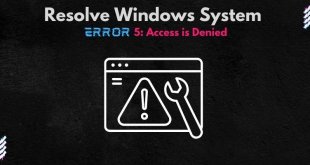Companies are churning out more content than ever before—blog posts, ads, videos, social media campaigns, podcasts, etc. But is their Brand Image consistent? And if not, who cares?
If you’re creating branded content, you should care. Take a look at these statistics.
- Nearly 80% of consumers trust companies that create custom-branded content
- If your company has a blog, you’ll generate up to 67% more leads
- After viewing a branded video, 64% of consumers will make a purchase
- 6/10 millennials say branded online content increases their loyalty
These stats paint the picture that branding is essential to building awareness, and there’s a greater chance that customers will make a purchase from a brand they recognize.
If you’re releasing your own branded content out into the wild, you need to make sure it’s consistent. Otherwise, you run the risk of diluting your brand image. This means your core values and the foundation of your company get lost along the way.
It can drastically reduce the effectiveness of your overall branding and fewer people buying your product. Here’s how to ensure your core branding will remain unchanged across all your marketing channels.
Create brand guidelines to follow
No matter your company’s size, you should digitally jot down your very own brand guidelines. This document is a one-stop-shop that lets anyone who reads it know how to brand your content. It can include things like:
- Your Mission statement
- How to use your brand assets
- What tone of voice to use
- Editorial style guide
- Your brand’s color palette
What ends up going into your brand guidelines differs from company to company.
- Netflix makes it very clear how to use their logo
- NASA’s branding guidelines have pages detailing how to brand satellites and space shuttles
- Urban Outfitters specifically specify which tone of voice to use
When creating your brand guidelines, the point is to include as much information as you can that’s relevant to your content creation. If you’re producing Facebook and Instagram ads, have a dedicated section detailing how to keep consistent when creating those kinds of content. The same applies to blog posts and video formats.
Doing so allows anyone to pick up your guidelines and instantly know how to keep your branding the same, no matter where your content is seen.
The role your logo plays in branding

Your logo is the face of your brand, and you shall be judged by it. Yes, it sounds harsh, but that’s just the way the world works. Customers will choose to love or hate your brand just by looking at your logo. If it’s dull, pixelated, stretched across the screen, or has off-putting colors, you’ll turn away valuable customers.
If you don’t have one yet, then it’s time to get on that. You can make a logo online in a few minutes with logo maker websites. Anyone can use these tools – they are cheap and fast – so there is no excuse not to have a logo.
Regardless of whether you are making a new logo or refreshing your current logo, make sure it aligns with your brand’s character and appeals to your target audience.
Choose a tone of voice and stick with it
Your tone of voice is the personality behind your words, and every piece of content you create, whether it’s online or offline, must keep to the same tone of voice. Is it fun and casual? Or professional and serious. When brands flip flop between different tones, it sounds like someone else behind the words each time, which isn’t genuine.
Sometimes you’ll need to use a slightly different tone depending on the marketing channel you’re using. If your tone of voice is bubbly and funny, you may need to ‘tone’ it down slightly when posting on LinkedIn. As long as you document everything correctly in your brand guidelines, you won’t run into any issues.
Only use channels that fit your brand and target audience

It may be tempting to constantly jump on the latest marketing trends, whether it’s Tik Tok or the latest social media platform to blow up. You may also feel the tempting touch of peer pressure if you notice similar companies churning out post after post somewhere.
But before jumping on any bandwagons, take a moment to evaluate whether the platform is the right one for your brand and target audience:
- Is it off-brand for you to produce content there?
- Does your target audience use this platform at all?
If the answer is no, save your resources for somewhere that better aligns with your brand and where you’ll reach your target audience.
Pre-plan your topics and use a calendar
Putting together high-quality content that’s engaging and actionable doesn’t happen overnight. Last-minute blog posts and ads will reflect poorly on your brand, especially if it fails to stick to your brand guidelines.
The best way to get the most out of your content is to create a content calendar and generate a list of topics beforehand. This allows you to perform research early and ensure that your business’s relevant people check it, whether it’s a fact-checker, proofreader, or brand specialist.
There are lots of great content calendar templates online – download one and use it to organize your content in one sharable place.
Don’t discount offline marketing

Digital marketing really has taken the world by storm, but don’t forget about good old-fashioned real-world marketing and how you can combine them. There are many opportunities to put up billboard ads, leaflets, and other ways to get your brand in front of your audience.
And if you win any awards, or make changes to your physical store, don’t hesitate to write a blog post about it, and invite people to see for themselves. Your competitors are also targeting your customers online, but you can gain an edge if you’re the first to take advantage of offline marketing.
Revisit and refresh old content
It’s perfectly natural for your brand to evolve after time. It could be your tone of voice changes, your logo gets a new look, or your brand colors get a fresh lick of paint. When this happens, you can go through your published content and refresh it to keep it in line with your current branding.
 free html design Free html design templates
free html design Free html design templates






